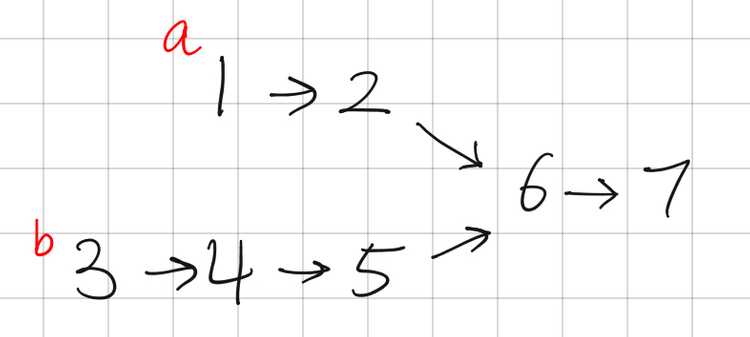- 0. 1/0 Knapsack Problem
- 0. Bike Rental Scheduling
- 0. Max Sum Increasing Subsequence
- 1. Two Sum
- 19. Remove Nth Node From End of List
- 35. Insert Search Position
- 45. Jump Game II
- 53. Maximum Subarray
- 63. Unique Paths II
- 70. Climbing Stairs
- 72. Edit Distance (Levenshtein Distance)
- 75. Sort Colors (Dutch National Flag)
- 78. Subsets (Power Set)
- 136. Single Number
- 141. Linked List Cycle
- 150. Evaluate Reverse Polish Notation
- 160. Intersection of Two Linked Lists
- 169. Majority Element
- 200. Number of Islands
- 210. Course Schedule II
- 215. Kth Largest Element in an Array
- 226. Invert Binary Tree
- 231. Power of Two
- 234. Palindrome Linked List
- 237. Delete a Node in a Linked List
- 279. Perfect Squares
- 322. Coin Change
- 323. Number of Connected Components in an Undirected Graph
- 344. Reverse a String
- 380. Insert Delete GetRandom O(1)
- 383. Ransom Note
- 392. Is Subsequence
- 406. Queue Reconstruction by Height
- 417. Pacific Atlantic Water Flow
- 468. Validate IP Address
- 490. The Maze
- 509. Fibonacci Number
- 518. Coin Change II
- 520. Detect Capital
- 528. Random Pick with Weight
- 690. Employee Importance
- 700. Search in a Binary Search Tree
- 703. Kth Largest Element in a Stream
- 705. Design Hashset
- 706. Design Hashmap
- 733. Flood Fill
- 912. Sort an Array
- 933. Number of Recent Calls
- 994. Rotting Oranges
- 1029. Two City Scheduling
- 1431. Kids with Greatest Number of Candies
- 1436. Destination City
- 1437. Check If All 1's are at Least Length K Places Away
- 1446. Consecutive Characters
- 1447. Simplified Fractions
- .
160. Intersection of Two Linked Lists
Last Updated: 2020.05.22
Table of Contents
Resources
Question Source: https://leetcode.com/problems/intersection-of-two-linked-lists
Two-Pointer Brute Force: O(n2) / O(1)
Let's say there are 2 pointers, a and b. For every a we check if b is at the same node.

When a = 1 we'll have to check b = 3,4,5...7 . No matches, so we move a and go again...
Now a = 2 and we'll check b = 3,4,5...7 . No matches, so we move a and go again...
Now a = 6 and we'll check b = 3,4,5,6. It matches! So 6 is the intersecting node.
However, this approach has an O(n2 ) runtime. Suppose m is the length of linked list a and n is the length of linked list b. In the worse case scenario, the very last node is the intersection node, and we'll have to do m*n checks. When m=n we will have m*m runtime which is O(n2).
The space complexity is O(1) because we've only used two pointers.
Dictionary: O(n) / O(n)
# Definition for singly-linked list.
class ListNode:
def __init__(self, x):
self.val = x
self.next = None
class Solution:
def getIntersectionNode(self, headA: ListNode, headB: ListNode) -> ListNode:
a = headA
b = headB
memo = {}
if not a or not b:
return None
elif a.next == b:
return b
elif b.next == a:
return a
elif a == b:
return a
while a.next or b.next:
if a.next == b.next:
return a.next
elif a.next and id(a.next) in memo:
return a.next
elif a.next == headB:
return headB
elif b.next == headA:
return headA
elif b.next and id(b.next) in memo:
return b.next
else:
if a.next:
memo[id(a.next)] = a
a = a.next
if b.next:
memo[id(b.next)] = b
b = b.next
return None
if __name__ == '__main__':
# Set up the linked lists
a1 = ListNode('1')
a2 = ListNode('2')
a3 = ListNode('3')
a4 = ListNode('4')
b1 = ListNode('1')
b2 = ListNode('2')
b3 = ListNode('3')
a1.next = a2
a2.next = a3
a3.next = a4
b1.next = b2
b2.next = b3
s = Solution()
assert s.getIntersectionNode(a1,b1)Set: O(n) / O(n)
class Solution:
def getIntersectionNode(self, headA: ListNode, headB: ListNode) -> ListNode:
node_set = set()
node = headA
while node:
node_set.add(node)
node = node.next
node2 = headB
while node2:
if node2 in node_set:
break
node2 = node2.next
if node2:
return node2
return NoneTwo-Pointer: O(n) / O(1)
# Definition for singly-linked list.
class ListNode:
def __init__(self, x):
self.val = x
self.next = None
class Solution:
def getIntersectionNode(self, headA, headB):
a = headA
b = headB
if a == None or b == None:
return None
while a != b:
a = a.next
b = b.next
if a == None and b == None:
return None
elif a == None:
a = headB
elif b == None:
b = headA
return a
if __name__ == '__main__':
# Set up the linked lists
# 1 -> 2 -> 3 -> 4
# 1 -> 2 -> 3
a1 = ListNode('1')
a2 = ListNode('2')
a3 = ListNode('3')
a4 = ListNode('4')
b1 = ListNode('1')
b2 = ListNode('2')
b3 = ListNode('3')
a1.next = a2
a2.next = a3
a3.next = a4
b1.next = b2
b2.next = b3
# no intersection
s = Solution()
if s.getIntersectionNode(a1,b1) == None:
print(s.getIntersectionNode(a1,b1))
else:
print(s.getIntersectionNode(a1,b1).val)
# intersection at 2
b1.next = a2
if s.getIntersectionNode(a1,b1) == None:
print(s.getIntersectionNode(a1,b1))
else:
print(s.getIntersectionNode(a1,b1).val)
# intersection at 4
b1.next = b2
b3.next = a4
if s.getIntersectionNode(a1,b1) == None:
print(s.getIntersectionNode(a1,b1))
else:
print(s.getIntersectionNode(a1,b1).val)
# intersection at 1
b1 = a1
if s.getIntersectionNode(a1,b1) == None:
print(s.getIntersectionNode(a1,b1))
else:
print(s.getIntersectionNode(a1,b1).val)
# None edge case
b1 = None
if s.getIntersectionNode(a1,b1) == None:
print(s.getIntersectionNode(a1,b1))
else:
print(s.getIntersectionNode(a1,b1).val)